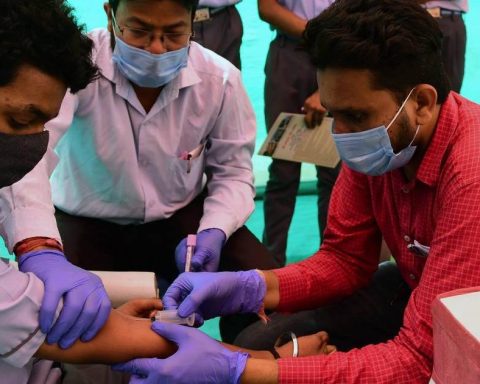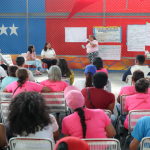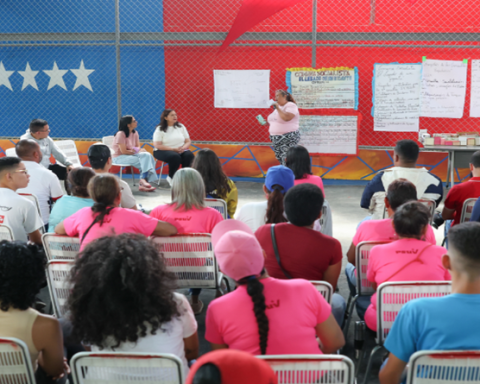The unpaid domestic workor has been for decades, and even for centuries, the main barrier for women to access the labor market, to the point that, according to the National Administrative Department of Statistics (Dane), these tasks weigh around a fifth of our economy, and despite this, they are not counted.
(Read: The effects that the price parity between the dollar and the euro would have).
Yesterday, the entity presented an update of the figures of the Care Economy Satellite Account, which was created by the entity in compliance with Law 1413 of 2010. According to the director of the entity, Juan Daniel Oviedo, these activities, measured in terms of gross domestic product (GDP) they represent around 19.6% of economic activity.
“If this, which we do not see in the system of national accounts and we do not count it within the GDP weighs 19.6%, it would be the most important economic sector and that becomes fundamental due to its feminization, because we must recognize that overload so that women contribute to the labor market.”, assured Oviedo.
It is worth mentioning that this 19.6% share of GDP, in effect, represents a decrease compared to 20.4% that weighed the tasks of domestic work and unpaid care in 2012, when Dane carried out the first survey, but it is a slight increase compared to the data registered in 2020, which goes from 19.4% to 19.6%.
In other words, the confinement and overload of women in these tasks of domestic work and unpaid work in the time of the pandemic managed to stop and even reverse that participation reduction gap within GDP of domestic work and unpaid care work.
Precisely, last year in Colombia, citizens allocated 41,062 million hours to domestic work and unpaid care. Of these 31,914 million were contributed by women and 9,148 million by men.
This means that in 2021 past they were the ones who contributed 77.7% of the total of annual hours dedicated to domestic work and unpaid care, while men contributed the remaining 22.3%.
“The Dane has a very important commitment so that its statistics guide policies that allow the equity of women’s participation in economic, social and political dimensions “assured the director of Dane, who said that, associated with this, is the recognition that women are overloaded with domestic work and unpaid care.
Oviedo said that these types of statistics show the need for a redistribution of this domestic work, so that it allows women to participate in a easier in the labor market economy pay and public policies are oriented that allow reducing the time dedicated to unpaid domestic work and with this, have a much more equitable participation.
What is time spent on?
According to figures from the entity, last year Colombians spent approximately 115,461 million hours on food supply, and, 37.7% of unpaid work and care time.
After this, cleaning, maintenance and repair work for the home appears, with 11,084 million, 27% of the total, while in care and support activities for people in the home 6,418 hours were spent last year, on 15, 6% of the time of these tasks.
(Also: For new skills, 75% of job offers have changed).
However, the director of the Dane assures that “there is concrete evidence of the feminization of domestic work and unpaid care.”
According to Oviedo, in this 77% of weight, the most feminized activity is clothing maintenance, while the least feminized job was shopping and home management, which includes tasks such as paying for services or go out to market, in which there is practically gender parity.
Despite this, the Dane recognizes that with the pandemic, the participation of hours of women in domestic work fell by 1 percentage point (pps) between 2017 and 2021, going from 78.7% to 77.7%. “They are profits, yes, but minimal,” said Oviedo.
This is because, in the food supply, in 2021, 84.3% of the hours were offered by women, in 2017 it was 87%. In the case of home cleaning activities, there was also a gain in this overload of women, because for 2021 the figures showed that 71.5% of the hours were offered by women while in 2017 it was 73.8%.
LAURA LUCIA BECERRA ELEJALDE

















